Home>Garden Essentials>How To Do Landscape Design
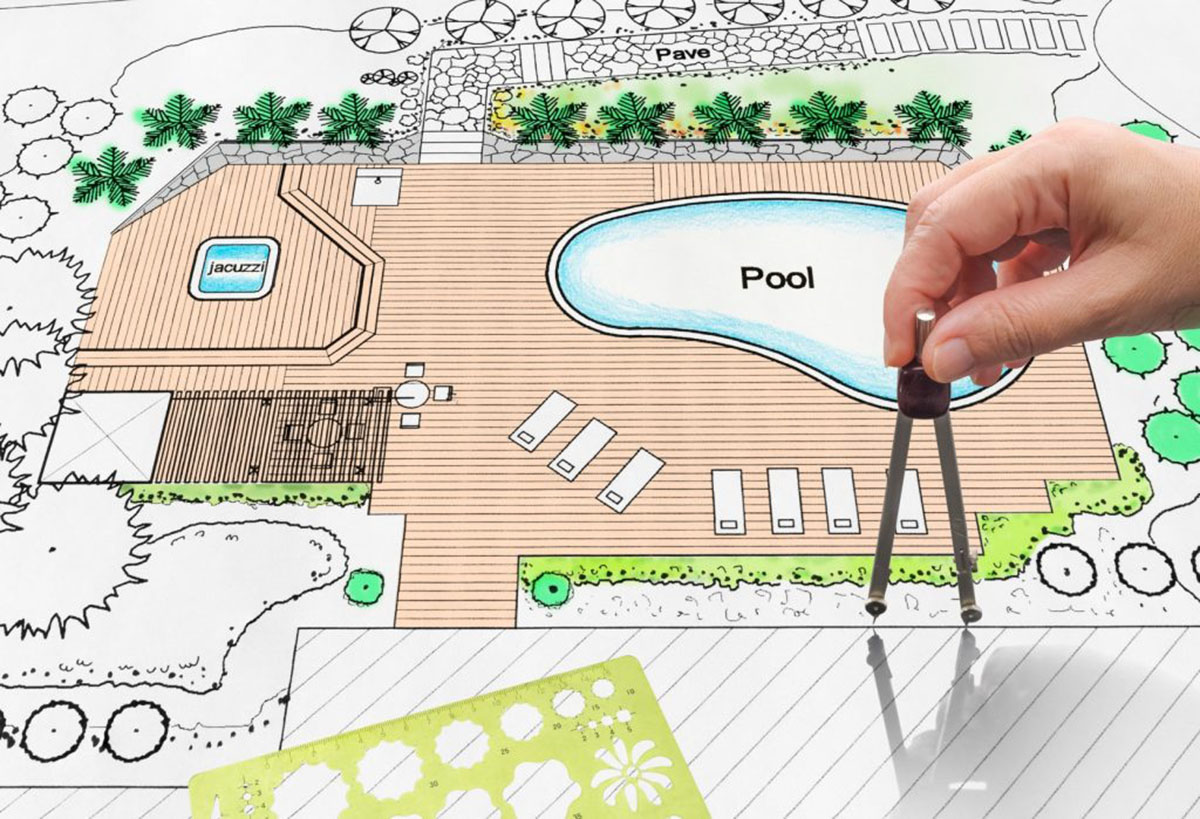

Garden Essentials
How To Do Landscape Design
Modified: March 19, 2024
Learn how to design stunning landscapes with our comprehensive guide. Discover essential gardening techniques and create a beautiful garden with our step-by-step tutorials.
(Many of the links in this article redirect to a specific reviewed product. Your purchase of these products through affiliate links helps to generate commission for Storables.com, at no extra cost. Learn more)
Introduction
Welcome to the world of landscape design! Whether you have a sprawling backyard or a small balcony, designing and creating a beautiful outdoor space can be a rewarding and rejuvenating experience. A well-designed landscape not only enhances the visual appeal of your property but also adds value and provides a peaceful sanctuary to relax and unwind.
However, embarking on a landscape design project may seem like a daunting task, especially if you have limited knowledge and experience in gardening and design principles. But fret not! In this comprehensive guide, we will walk you through the essential steps and considerations involved in creating a stunning landscape that reflects your style and meets your needs.
Before delving into the intricacies of landscape design, it’s crucial to understand its significance. Landscape design is the art of arranging and modifying outdoor spaces, incorporating plants, hardscapes, and various elements to achieve a harmonious and aesthetically pleasing environment. It involves careful planning, creativity, and an understanding of the surrounding natural elements.
The benefits of a well-designed landscape are numerous. Not only does it enhance the curb appeal of your home, but it also provides a welcoming ambiance, improves air quality, reduces noise pollution, and even contributes to your overall well-being. A thoughtfully designed landscape can create a seamless transition between your indoor and outdoor spaces, blurring the boundaries and expanding the living area.
So, where do you begin? The first step in landscape design is assessing your space. Understanding the size, topography, and existing features of your outdoor area will provide valuable insights into what is feasible and how to maximize its potential. From there, you can set goals and establish a budget that aligns with your vision and resources.
Next, it’s time to choose a design style that appeals to you. Whether you prefer a formal, symmetrical garden or a relaxed, naturalistic retreat, various design styles can be tailored to suit your preferences and the overall aesthetic of your home.
Once you have a vision and style in mind, planning the layout becomes crucial. This involves determining the placement of different elements such as pathways, seating areas, and plant beds, ensuring proper flow and functionality.
With the layout in place, it’s time to select plants and materials that will bring your landscape to life. Choosing the right plants, considering factors such as climate, soil conditions, and maintenance requirements, is essential to create a thriving and sustainable garden. Similarly, selecting appropriate materials for hardscapes like patios, decks, and retaining walls can significantly impact the overall look and durability of your landscape.
Water features can add a soothing and tranquil element to your outdoor space. Adding a pond, fountain, or waterfall can provide both visual interest and auditory delight. Additionally, incorporating outdoor living spaces such as dining areas, fire pits, or lounging zones can create a welcoming and functional environment for entertaining or relaxation.
Once the design is finalized, it’s time to implement it. This may involve your own hands-on involvement or hiring professionals to bring your vision to life. Proper installation and careful execution are essential to ensuring the longevity and success of your landscape design.
Finally, maintaining your landscape is an ongoing process. Regular pruning, weeding, watering, and fertilizing are necessary to keep your garden healthy and vibrant. Understanding the maintenance requirements of your plants and implementing sustainable gardening practices will help preserve the beauty of your landscape for years to come.
With a solid foundation in landscape design principles and a clear understanding of the steps involved, you are now equipped to embark on your own landscape design journey. From conceptualizing and planning to implementation and maintenance, this guide will provide the knowledge and inspiration you need to create a stunning outdoor space that you can enjoy for years to come.
So, let’s dive in and explore the wonderful world of landscape design!
Key Takeaways:
- Landscape design involves assessing your space, setting goals and budget, choosing a design style, planning the layout, selecting plants and materials, incorporating hardscapes, adding water features, creating outdoor living spaces, implementing the design, and maintaining your landscape.
- Maintaining your landscape is crucial for its long-term health and beauty. Regular watering, mulching, weeding, pruning, and fertilizing, along with proper hardscape maintenance, contribute to a vibrant and thriving outdoor space.
Read more: How Do You Charge For Landscaping
Understanding Landscape Design
Landscape design is a multidisciplinary practice that combines elements of art, architecture, horticulture, and environmental science. It involves arranging and modifying outdoor spaces to create an aesthetically pleasing and functional environment. A well-designed landscape takes into account factors such as the natural elements, the needs and preferences of the homeowner, and the overall style and character of the property.
There are several key principles that govern landscape design. These principles include unity, balance, proportion, focalization, and rhythm. Unity refers to the harmony and coherence of the design, creating a sense of cohesion throughout the space. Balance ensures visual stability by distributing elements evenly and symmetrically or asymmetrically for a more dynamic composition. Proportion helps establish a pleasing relationship between different elements, ensuring that they are appropriately sized and scaled for the overall space. Focalization involves creating a focal point or points that draw attention and provide visual interest. Rhythm refers to the repetition of certain elements, such as plants or materials, to create a sense of movement and continuity within the design.
In addition to these principles, landscape design also takes into consideration the practical and functional aspects of the space. It involves determining the best use of the land and allocating areas for specific activities, such as entertaining, gardening, or recreation. It also considers factors such as drainage, accessibility, and privacy.
Understanding the natural elements of your landscape is crucial in landscape design. This includes factors such as the climate, topography, soil conditions, and existing vegetation. These elements will influence the selection of plants, materials, and hardscaping features that are suitable for your space. For example, if you live in a region with hot and dry summers, you may opt for drought-tolerant plants and materials that can withstand harsh conditions.
When designing your landscape, it’s essential to consider the needs and preferences of the homeowner. This involves understanding how the space will be used, the desired level of maintenance, and any specific requirements or limitations. For example, if you have children or pets, you may want to create designated play areas or incorporate pet-friendly features into the design.
Another crucial aspect of landscape design is the overall style and character of the property. The design should complement and enhance the architectural style of your home, creating a seamless transition between the indoor and outdoor spaces. Whether you prefer a formal and structured garden, a charming cottage-style landscape, a minimalist modern design, or a lush and tropical oasis, the style and character of your landscape should align with your personal taste and the overall theme of your property.
By understanding these fundamental aspects of landscape design, you can create a cohesive, functional, and visually appealing outdoor space that suits your needs and reflects your unique style. Whether you’re starting from scratch or renovating an existing landscape, taking the time to understand the principles and considerations of landscape design will ensure a successful and satisfying project.
Assessing Your Space
Before diving into the exciting world of landscape design, it’s crucial to assess your outdoor space. This initial step will provide valuable insights into the size, layout, and existing features of your yard, helping you make informed decisions during the design process.
Start by taking a walk around your property and observing the overall shape and dimensions of your outdoor space. Consider the boundaries, any slopes or changes in elevation, and the orientation of the sun. These factors will influence the placement of different elements, such as seating areas, pathways, and garden beds.
Next, map out your yard and create a scaled drawing. This will help you visualize and plan your landscape design more effectively. Measure the length and width of your yard and any significant features, such as existing structures, trees, or fences. Be sure to note any utilities or utility lines that may affect the design.
Take note of the different microclimates within your yard. Microclimates refer to areas that have slightly different climatic conditions from the surrounding space. These variations can be due to factors such as shade from buildings or trees, wind patterns, or variations in soil moisture. Understanding these microclimates will guide your plant selections and help ensure the health and success of your garden.
Consider the existing features in your yard that you would like to preserve, incorporate, or remove. For example, you may have a beautiful old tree that you want to showcase as a focal point, or you may have an unsightly shed that you want to conceal with landscaping. Assessing these features will help you determine the best layout and placement of your design elements.
Pay attention to the soil conditions in your yard. Evaluate its texture, composition, drainage, and pH level. This information will inform your plant choices and guide you in improving the soil quality if necessary. Conducting a soil test can provide more detailed information about its nutrient levels and pH, helping you make more precise recommendations for fertilization and soil amendments.
Assess the amount of sunlight and shade different areas of your yard receive throughout the day. This will help you select plants that are suitable for the light conditions in each area. Note any obstructions, such as buildings or trees, that cast shadows and consider how they may impact the placement of plants or features that require full sun or shade.
Take into account the view from different vantage points within your property. Consider which areas you want to highlight or screen. For example, you may want to create privacy from neighboring properties or frame a beautiful view. Understanding your desired views will help you plan the placement of structures, hedges, or other design elements.
Lastly, consider the practical aspects of your space. Determine the primary uses of your outdoor area, such as entertaining, gardening, or relaxation. Consider any specific features or amenities you want to incorporate, such as a vegetable garden, a play area for children, or a fire pit for cozy evenings. Assessing your space based on these practical considerations will guide your design choices and ensure that your landscape meets your specific needs.
By thoroughly assessing your space, considering its unique characteristics and your specific requirements, you will be well-equipped to embark on the next stage of your landscape design journey. Armed with this knowledge, you can confidently move forward with setting goals, establishing a budget, and choosing a design style that will transform your outdoor space into a beautiful and functional oasis.
Setting Goals and Budget
Setting goals and establishing a budget are essential steps in any landscape design project. These steps will help you define your vision, prioritize your needs, and ensure that your design aligns with your resources and constraints.
Start by defining your goals for the project. Consider what you want to achieve with your landscape design. Do you aim to create a serene retreat where you can relax and unwind? Are you looking to enhance your home’s curb appeal and increase property value? Do you want to create an outdoor space that is suitable for entertaining and socializing?
Having a clear and specific vision of what you want to accomplish will guide your decision-making throughout the design process. It will help you determine the key elements and features you want to incorporate and ensure that the final result meets your expectations.
Next, assess your budget for the project. Determine how much you are willing and able to spend on your landscape design. Consider factors such as the scale and complexity of your project, the materials and plants you plan to use, and any professional assistance you may require.
When establishing your budget, make sure to account for both the initial installation costs and the ongoing maintenance expenses. Keep in mind that landscaping is an investment that requires regular care and upkeep to ensure its long-term success and beauty.
If you have a limited budget, consider phasing your project over time. Identify the key elements or areas that are most important to you and focus on those initially. This approach allows you to spread out the costs and tackle different aspects of your design as your budget allows.
Research the average costs associated with landscape design and installation in your area. This will give you a general idea of what to expect and help you set realistic budget expectations. Keep in mind that prices can vary depending on the complexity of the project, the availability of materials, and local market conditions.
Consider seeking professional advice or obtaining quotes from landscape designers or contractors. They can provide valuable insights and help you assess the feasibility of your goals within your budget. They may also be able to offer cost-effective alternatives and suggest ways to maximize the value and impact of your design.
While it’s essential to have a budget in mind, be flexible and open to adjustments. You may need to make trade-offs or reprioritize certain elements based on your budget limitations. Remember that landscape design is a creative process, and there are often multiple solutions to achieve your goals within different price points.
By setting clear goals and establishing a realistic budget, you will have a solid foundation for your landscape design project. You can confidently move forward with choosing a design style, planning the layout, and selecting the plants and materials that will bring your vision to life. Remember to periodically revisit your goals and budget throughout the design process to ensure you stay on track and achieve the outdoor space of your dreams.
Choosing a Design Style
Choosing a design style is an exciting and important step in landscape design. The style you select will set the overall tone and character of your outdoor space, creating a cohesive and harmonious environment that reflects your personal taste and complements the style of your home.
When considering a design style, take cues from the architecture and design elements of your home. A well-designed landscape should seamlessly integrate with the existing structure, creating a cohesive and visually appealing composition. If you have a modern or contemporary home, you may lean towards a clean and minimalist landscape design. On the other hand, a cottage-style or rustic landscape may be more fitting for a traditional or farmhouse-style house.
Another factor to consider is your personal preference and the atmosphere you want to create. Do you prefer a formal and structured design with clean lines and symmetrical patterns? Or do you lean towards a more informal and relaxed style with soft curves, meandering pathways, and abundant plantings?
Here are some popular landscape design styles to consider:
- Formal/Traditional: This style is characterized by symmetrical patterns, well-defined lines, and manicured hedges. It often features geometric shapes, formal plantings, and classical elements such as fountains or statues. Formal gardens are known for their elegance and timeless appeal.
- Informal/Naturalistic: This style mimics the look and feel of a natural landscape. It uses organic shapes, flowing lines, and a mix of native and more relaxed plantings. A naturalistic design often incorporates elements such as meandering pathways, wildflower meadows, and natural stone accents.
- Modern/Contemporary: This style emphasizes clean lines, minimalist design, and an overall sense of simplicity. It often incorporates geometric shapes, sleek materials like metal and concrete, and bold architectural features. A modern design typically emphasizes open space and the use of minimalist plantings.
- Mediterranean: Inspired by the landscapes of Mediterranean countries, this style offers a relaxed and inviting aesthetic. It typically features elements like terracotta pavers, stucco walls, and a variety of vibrant and drought-tolerant plants such as lavender, rosemary, and bougainvillea. Water features like fountains or a tranquil pool may also be prominent.
- Asian/Zen: This style draws from Eastern design principles, emphasizing balance, tranquility, and simplicity. Elements like curved pathways, bamboo, rocks, and zen gardens filled with sand or gravel raked into patterns create a serene and meditative atmosphere.
Remember, these styles are not mutually exclusive or rigid. It’s common for homeowners to incorporate elements from different styles to create a unique and personalized design. Feel free to mix and match elements that resonate with your taste and the overall aesthetic you wish to achieve.
Consider your lifestyle and how you plan to use your outdoor space. If you enjoy entertaining, you may want to incorporate areas for outdoor dining or seating. If you have children or pets, you may need a designated play area or space for them to roam safely. The design style you choose should accommodate these functional requirements while maintaining its overall aesthetic appeal.
Exploring books, magazines, and online resources can provide inspiration and help you visualize different design styles. Collect images that resonate with your vision and create a mood board to refine your ideas and narrow down your preferences.
By carefully considering the architectural style of your home, your personal taste, and functional needs, you can confidently choose a design style that will create a stunning and cohesive outdoor space. This style will serve as the foundation for the remaining steps in your landscape design journey, including planning the layout, selecting plants and materials, and bringing your vision to life.
Read more: How To Do River Rock Landscaping
Planning the Layout
Planning the layout of your landscape is a crucial step in creating a functional and visually appealing outdoor space. The layout determines the arrangement of different elements such as pathways, patios, plant beds, and features, ensuring optimal flow and usability.
Start by considering the overall design principles we discussed earlier, such as unity, balance, and proportion. These principles will guide your decision-making as you create a layout that feels cohesive and harmonious.
Assess how you and your family will use the space. Do you need areas for entertainment and dining? How about spaces for relaxation or play? Understanding these needs will help you determine the size and location of different functional zones within your landscape.
Consider the circulation patterns and flow of movement within your outdoor area. Design pathways that provide natural and intuitive access to different parts of your yard. Create a logical connection between the main entrance, outdoor living spaces, and other key areas, ensuring ease of movement and connectivity.
When placing plants, consider their growth habits and mature size. Plant taller species towards the back of beds or borders and shorter ones towards the front to create depth and visual interest. Leave enough space for plants to grow and expand without overcrowding each other.
If you have a small yard, employ space-saving techniques such as vertical gardening or container gardening to maximize the use of your available space. Utilize features like trellises or vertical planters to create a lush and green backdrop without taking up precious floor space.
Integrate focal points and focal areas within your layout. These can be architectural elements like a pergola or gazebo, a water feature, or a standout specimen plant. Focal points draw attention and provide visual interest, while focal areas create gathering spots or destinations within your landscape.
Consider the aesthetics of your layout from different vantage points. Pay attention to the view from inside your home as well as from various outdoor seating areas. Aim to create visually pleasing compositions that take advantage of the existing features or vistas while optimizing the overall beauty of your landscape.
Don’t forget to incorporate functional features like irrigation systems or outdoor lighting into your layout. Proper irrigation ensures that your plants receive adequate water, while outdoor lighting can extend the usability and ambiance of your outdoor space into the evening hours.
Throughout the planning process, keep in mind the principles of sustainability and environmental stewardship. Design with water conservation in mind, incorporating techniques like rainwater harvesting and drought-tolerant plantings. Consider using permeable surfaces for paths and patios to promote water infiltration and prevent runoff.
It’s important to note that your layout is not set in stone and can be adjusted as needed. As you implement your design and observe how the space functions, you may discover areas that need modification or improvements. Be flexible and open to making changes as you fine-tune and refine your landscape over time.
By carefully planning the layout of your landscape, you can create an outdoor space that is not only visually appealing but also functional and enjoyable for years to come. Taking the time to consider the flow, usage, and aesthetic aspects of your design will ensure that every element in your landscape has a purpose and contributes to the overall success of your outdoor space.
Selecting Plants and Materials
Selecting the right plants and materials is a crucial aspect of landscape design. The plants you choose will bring life and beauty to your outdoor space, while the materials you select will provide structure and functionality. By considering factors such as climate, maintenance requirements, and aesthetic preferences, you can create a well-balanced and thriving landscape.
Start by understanding your local climate and growing conditions. Consider the average temperature range, annual rainfall, and sunlight exposure in your area. Choose plants that are well-suited to these conditions to ensure their survival and growth. Native plants are often an excellent choice as they have evolved to thrive in your specific region and require less maintenance.
Consider the maintenance requirements of different plants. Some plants may be drought-tolerant and low-maintenance, while others may require regular watering, pruning, or fertilizing. Assess the amount of time and effort you are willing and able to dedicate to the maintenance of your landscape.
Take into account the desired aesthetic and overall style of your landscape. Choose plants that complement the design and architectural elements of your home. If you have a formal garden, you may opt for neatly clipped hedges and symmetrical arrangements. For a more naturalistic or cottage-style garden, consider a mix of blooming perennials, ornamental grasses, and wildflowers.
Consider the various elements that plants can bring to your landscape. Foliage, flowers, texture, and seasonal interest all play a role in creating a visually appealing and dynamic outdoor space. Choose a mix of plants that offer different visual characteristics and bloom at different times of the year to ensure ongoing interest and beauty.
When selecting materials for hardscaping features such as pathways, patios, and retaining walls, consider their durability, functionality, and aesthetic appeal. Different materials, such as natural stone, pavers, or concrete, offer distinct looks and textures. Choose materials that complement your design style and the overall theme of your landscape.
Take into account the practical considerations of different materials. For example, if you live in a region with extreme heat or cold temperatures, choose materials that can withstand these conditions without cracking or deteriorating. Additionally, consider factors such as ease of maintenance and slip resistance for safety.
Explore various plant and material options by visiting local nurseries, garden centers, or online resources. Speak with knowledgeable professionals who can provide guidance on suitable choices for your specific landscape and growing conditions. Consider factors such as the mature size of plants, compatibility with surrounding plants, and the ability to achieve proper drainage with different hardscaping materials.
When designing your plantings, be mindful of creating layers and varied heights to add depth and visual interest. Group plants with similar water and sunlight requirements together to optimize their care and prevent over or under-watering. Pay attention to the mature size of plants and allow sufficient space for them to grow and fill out without overcrowding.
Lastly, don’t be afraid to experiment and get creative with your plant selections and materials. Mix different colors, textures, and forms to create a visually captivating landscape. Consider using recycled or sustainable materials for hardscaping to minimize environmental impact.
By carefully selecting plants and materials that align with your climate, maintenance preferences, and design vision, you can create a beautiful and thriving landscape that brings joy and enhances the overall aesthetic of your outdoor space.
When designing a landscape, consider the natural elements of the area such as sunlight, soil type, and climate. This will help you choose the right plants and design features for a successful and sustainable landscape.
Incorporating Hardscapes
Hardscapes are the non-living elements in your landscape design that provide structure, functionality, and visual interest. Incorporating hardscapes into your outdoor space can enhance its overall design, create functional areas, and add durability to your landscape. From pathways and patios to retaining walls and outdoor structures, hardscapes play a crucial role in creating a well-rounded and inviting outdoor environment.
One of the fundamental hardscape elements is pathways. Pathways guide visitors through your outdoor space and create a sense of flow and connectivity. They can be made of various materials such as natural stone, pavers, gravel, or concrete. Consider the style, function, and overall aesthetic of your landscape when selecting the material for your pathways. Curved pathways can add a soft and inviting feel, while straight lines create a more formal and structured look.
Patios and outdoor living areas provide places for relaxation, entertainment, and dining. When designing your patio, consider factors such as size, shape, and location. Determine how many people you plan to accommodate, what activities will take place, and how it will integrate with the overall layout of your landscape. Materials for patios can range from natural stone to concrete pavers, each offering its own aesthetic and durability.
Retaining walls are another hardscape element that serves functional and aesthetic purposes. They are designed to hold back soil, control erosion, and create level areas in sloped landscapes. Retaining walls can be constructed using various materials, including natural stone, concrete blocks, or timber. They can be used to delineate different garden areas, create terraced gardens, or add visual interest to your landscape.
Outdoor structures such as pergolas, gazebos, or arbors can provide shade, define an area, and add architectural interest to your outdoor space. Consider the purpose and scale of the structure, as well as how it will harmonize with the overall design. These structures can be made from a variety of materials, including wood, metal, or vinyl, and can be enhanced with climbing plants and hanging accessories.
Water features, such as ponds, fountains, or waterfalls, can create a calming and soothing ambiance in your outdoor space. They add a dynamic element and attract birds and wildlife. When incorporating water features, consider the scale, sound, and overall style that matches your landscape design. Materials for water features can vary from natural stone to pre-formed units or custom-made structures.
When selecting hardscape materials, consider factors such as durability, maintenance requirements, and how they will fit into the overall design scheme. Opt for materials that are appropriate for your climate and can withstand the elements. Balance aesthetics with functionality to ensure that your hardscapes will stand the test of time and provide lasting beauty in your landscape.
Remember to consider the positioning and integration of hardscapes into your landscape design. They should complement the plants, structures, and other natural elements in your yard. Ensure that they enhance the overall flow and usability of your outdoor space while harmonizing with the architectural style of your home.
Lastly, consult with professionals or visit local suppliers to gain insight into the best hardscaping materials and techniques for your specific project. They can offer guidance on design considerations, installation methods, and product options that align with your vision and meet your budget requirements.
By thoughtfully incorporating hardscapes into your landscape design, you can create a visually stunning and functional outdoor space that reflects your style and enhances your enjoyment of your outdoor environment.
Adding Water Features
Water features can add a captivating and tranquil element to your outdoor space, creating a serene and soothing ambiance. From ponds and fountains to waterfalls and streams, incorporating water features into your landscape design can elevate the aesthetic appeal and provide a refreshing retreat in your own backyard.
There are various types of water features to consider, each offering its own unique characteristics:
- Ponds: A pond can be a beautiful focal point in your landscape, providing a habitat for aquatic plants and wildlife. It can be designed in various shapes and sizes, from a small ornamental pond to a larger ecosystem pond. Consider adding water lilies, floating plants, and koi fish to enhance the beauty and vitality of your pond.
- Fountains: A fountain adds movement, sound, and visual interest to your outdoor space. It can range from a simple wall-mounted or freestanding fountain to a more elaborate tiered design. Fountains come in various styles and materials, including stone, concrete, or metal. Consider the scale, design, and location of your fountain to ensure it complements the overall aesthetics of your landscape.
- Waterfalls: Waterfalls create a captivating focal point and the soothing sound of cascading water. They can be incorporated into a pond or designed as standalone features. The height and size of the waterfall can be customized based on your preferences and the scale of your landscape. Consider using natural stone or rock to create a more organic and seamless look.
- Streams: Streams add movement and the sound of flowing water to your landscape. They can meander through your yard, creating a natural and serene atmosphere. The width and length of the stream can be adjusted to fit your space, and rocks and plants can be strategically placed to create a more natural and realistic look.
When adding water features, it’s important to consider their placement within your landscape. Determine whether you want your water feature to be a focal point or blend naturally with the surroundings. Consider factors such as visibility from indoor spaces or seating areas to maximize your enjoyment of the feature.
Think about the scale and proportions of the water feature in relation to the surrounding elements. Ensure that it fits harmoniously within the overall design scheme and doesn’t overwhelm the space. Balance is key in creating a visually appealing and cohesive landscape.
Consider incorporating lighting into your water feature to enhance its beauty and create a captivating nighttime display. Underwater lights or strategically placed spotlights can add drama and highlight the movement of the water. LED lights are energy-efficient and provide a range of color options to customize the ambiance.
Maintaining water features is an important aspect to ensure their longevity and cleanliness. Regularly check for debris, leaves, and algae buildup that might affect the water quality. Depending on the feature, you may need to consider water circulation systems or filters to keep the water clear and healthy.
When designing your water feature, consult with professionals or visit local suppliers to gather insights into the best materials, installation techniques, and maintenance practices for your specific project. They can guide you on safety considerations, such as proper drainage and water depth, to ensure a well-designed and safe feature.
Adding a water feature to your landscape design can create a sense of tranquility and serenity, transforming your outdoor space into a peaceful oasis. Whether you choose a pond, fountain, waterfall, or stream, the sound and sight of water will bring joy and provide a natural focal point that enhances the overall beauty of your outdoor environment.
Read more: How To Do Your Own Landscaping
Creating Outdoor Living Spaces
Creating outdoor living spaces is a wonderful way to extend your home and maximize your enjoyment of the outdoor environment. An outdoor living space provides a place for relaxation, entertainment, and quality time spent with family and friends. Whether it’s a cozy seating area, a dining space, or a full-fledged outdoor kitchen, designing these spaces will enhance the functionality and ambiance of your outdoor area.
Start by assessing how you plan to use your outdoor living space. Do you envision a comfortable lounge area for reading and relaxing? Or maybe a dining area where you can host gatherings and enjoy meals al fresco? Consider the activities and functions that are important to you and your family to determine the size and layout of your outdoor living spaces.
When designing seating areas, consider the comfort and durability of the furniture. Opt for weather-resistant materials that can withstand the elements. Choose cushions and upholstery that are UV-resistant and easy to clean. Arrange the seating to encourage conversation and create an inviting atmosphere.
Shade is an important factor to consider in outdoor living spaces. Incorporate shading solutions such as pergolas, umbrellas, or shade sails to provide relief from the sun’s rays during hot summer days. This will ensure that you can enjoy your outdoor space comfortably throughout the day.
Outdoor kitchens have become increasingly popular and can take your outdoor living space to the next level. Consider incorporating features such as a barbecue grill, countertop space for food preparation, a sink, and storage cabinets. Adding a dining area adjacent to the kitchen allows for seamless outdoor dining experiences.
Fire pits or outdoor fireplaces can create a cozy ambiance and extend the usability of your outdoor living spaces into the cooler months. They provide warmth and a focal point for gathering and relaxation. Choose a design that matches the overall style of your landscape and ensures proper ventilation and safety.
Consider incorporating lighting into your outdoor living spaces to create a welcoming and inviting atmosphere. Use a mix of ambient, task, and accent lighting to highlight features, pathways, and seating areas. LED lights are energy-efficient and come in various styles and colors to customize the ambiance to your liking.
Privacy is another important consideration when creating outdoor living spaces. Strategically place plants, hedges, or fencing to create privacy from neighboring properties or busy streets. Consider using pergolas, trellises, or decorative screens to create separation and define specific areas within your outdoor space.
Don’t forget to integrate your outdoor living spaces with other design elements in your landscape. Connect them to the overall layout, pathways, and focal points to create a seamless and cohesive design. Ensure that the style and materials used in your outdoor living spaces complement the overall aesthetic of your home and landscape.
When selecting materials for outdoor living spaces, durability and ease of maintenance are key. Opt for weather-resistant materials that require minimal upkeep. Consider materials such as stone, brick, concrete, wood, or composite decking for your flooring and surfaces. Ensure that any electrical or plumbing works are done by qualified professionals to guarantee safety and proper functionality.
Lastly, infuse your outdoor living spaces with personal touches and elements that make it feel like an extension of your indoor space. Incorporate accessories, textiles, and decor that reflect your style and personality. Add potted plants, outdoor rugs, and throw pillows to add color, texture, and comfort.
By thoughtfully designing outdoor living spaces, you can create a welcoming and functional area that enhances your lifestyle and allows you to fully embrace the beauty of the outdoors. Whether you’re enjoying a casual family gathering or hosting a festive celebration, your outdoor living spaces will provide a backdrop for unforgettable moments and cherished memories.
Implementing the Design
Implementing the design is an exciting phase in your landscape project, where your vision begins to take shape and become a reality. This phase involves bringing together all the elements and components of your design plan and executing them in a systematic and well-coordinated manner.
Begin by putting your design plan into action. This may involve DIY efforts if you have the knowledge and skills, or you may choose to hire professionals such as landscapers, contractors, or builders to handle the implementation. Ensure that all necessary permissions and permits are obtained before proceeding with any construction or major modifications.
Start by preparing the site for the various elements of your design. Clear the area of any existing vegetation, debris, or obstacles. If you are incorporating hardscapes, such as pathways, patios, or structures, ensure proper ground preparation by excavating and leveling the area as needed.
Next, implement the hardscape features of your design. Install pathways, patios, retaining walls, or any other structural elements based on the specifications outlined in your plan. Follow best practices and proper construction techniques to ensure durability, stability, and safety.
Coordinate with professionals or suppliers to source the desired plants, materials, and accessories for your landscape. Incorporate plantings according to your design layout, considering factors such as spacing, soil conditions, and light requirements. Follow proper planting techniques, taking care to amend the soil, water adequately, and provide any necessary support for plants.
Pay attention to the details and ensure that all elements of your design are integrated harmoniously. Consider the placement of focal points, the positioning of seating areas, and the flow of pathways to create a cohesive and visually appealing landscape. Step back periodically to assess and make any necessary adjustments as the implementation progresses.
When installing hardscapes, such as water features or outdoor structures, ensure proper setup and installation. Follow manufacturer instructions for the water features, including proper placement of pumps and filters, and test their functionality. In the case of outdoor structures, ensure they are constructed with care and attention to detail to guarantee their stability and longevity.
During the implementation process, keep in mind that unforeseen challenges may arise. Be prepared to adapt and make adjustments as needed. Maintain open communication with professionals or contractors involved in the project to address any concerns or modifications that arise during the implementation phase.
Consider phasing your project if it’s too large or complex to complete all at once. Prioritize the most crucial elements or areas, and complete them first. This allows you to see progress and make adjustments if necessary before moving on to subsequent phases.
By carefully implementing your design plan, you can transform your outdoor space into the landscape you have envisioned. Stay involved throughout the process, monitoring the progress and ensuring that the execution aligns with your vision. Regular inspections and open communication with professionals will help ensure that the end result meets your expectations and delivers the desired aesthetic and functionality.
Remember, implementing the design is just one phase of your landscape project. Maintenance and care are ongoing responsibilities to ensure the long-term health and beauty of your landscape. Regularly assess and address any maintenance needs, such as pruning, watering, fertilizing, or replacing plants as necessary.
Embrace the journey of transforming your outdoor space and enjoy the satisfaction of seeing your design come to life. With proper planning, coordinated execution, and attention to detail, you can create the landscape of your dreams that will bring joy and tranquility for years to come.
Maintaining Your Landscape
Maintaining your landscape is essential to ensure its long-term health, beauty, and functionality. Regular care and upkeep will help preserve the integrity of your design, allowing you to enjoy the full benefits of your outdoor space. Incorporating good maintenance practices and sustainable gardening techniques will contribute to the longevity and sustainability of your landscape.
One of the most important aspects of landscape maintenance is proper watering. Monitor plants and adjust watering based on their specific needs and environmental conditions. Water deeply and infrequently to encourage deep root growth and minimize water loss through evaporation.
Mulching is a simple yet effective method to reduce weed growth, retain moisture, and improve soil health. Apply a layer of organic mulch around your plants, ensuring not to pile it against the stems or trunks. Mulching also adds a finished and visually appealing look to your landscape.
Regular weeding is necessary to keep your landscape beds tidy and prevent unwanted plants from taking over. Remove weeds by hand or use tools such as a hoe or weed puller to minimize disturbance to the surrounding plants. Consider using organic weed control methods to minimize the use of herbicides.
Pruning and shaping your plants will help maintain their health and promote their natural growth habit. Remove dead or diseased branches, trim back overgrown areas, and shape shrubs and trees as needed. Pruning also allows for better air circulation and light penetration, reducing the risk of diseases and promoting plant vigor.
Regularly inspect your landscape for pests and diseases. Identify and address any issues as early as possible to prevent them from spreading and causing further damage. Utilize integrated pest management techniques to minimize the use of harmful chemicals and promote the balance of beneficial organisms.
Fertilize your plants appropriately to provide them with the necessary nutrients for healthy growth. Understand the specific needs of each type of plant and apply fertilizers accordingly. Utilize organic fertilizers or compost to improve soil fertility and promote long-term plant health.
Properly maintain your hardscape elements such as pathways, patios, and retaining walls. Clean them regularly to remove debris, dirt, and stains. Seal surfaces when necessary to protect against weathering and prolong their lifespan.
Regularly assess your landscape for any maintenance needs, such as repairing irrigation systems, replacing damaged plants, or touching up paint on structures. Keep a schedule and calendar to remind yourself of recurring tasks, such as fertilizing or seasonal pruning.
Stay informed about any local regulations or guidelines regarding landscape maintenance, such as water usage restrictions or invasive plant species. Adhering to these regulations will ensure that you are practicing responsible gardening and contributing to the sustainability of your community.
Consider the principles of sustainability in your landscape maintenance routine. Use organic and natural gardening practices, conserve water, and promote biodiversity by choosing native or drought-tolerant plants. Minimize the use of chemical pesticides and fertilizers to protect the environment and pollinators.
Regularly evaluate and modify your landscape design and plant selections to adapt to changing conditions and your evolving preferences. Over time, plants may outgrow their space or require replacement due to changes in environmental conditions. Be open to making adjustments and improvements to maintain a vibrant and thriving landscape.
Lastly, consider seeking professional assistance for specialized maintenance tasks or for guidance on best practices. Arborists, landscape contractors, or horticulturists can provide valuable expertise and ensure that your landscape receives the specific care it needs.
Maintaining your landscape is an ongoing responsibility, but it is also a rewarding and fulfilling endeavor. By investing time and effort into regular maintenance, you can ensure that your landscape remains a beautiful and enjoyable outdoor retreat for many years to come.
Conclusion
Congratulations on completing your journey through the world of landscape design! By following the steps outlined in this guide, you have gained a deeper understanding of the key principles and considerations involved in creating a stunning and functional outdoor space.
Through assessing your space, setting goals and budget, choosing a design style, planning the layout, selecting plants and materials, incorporating hardscapes, adding water features, creating outdoor living spaces, implementing the design, and maintaining your landscape, you have learned the importance of a well-thought-out and cohesive approach to landscape design.
Landscape design is a creative and ever-evolving process. It allows you to express your personal style and create a beautiful environment that enhances your quality of life. It offers a space for relaxation, celebration, and connection with nature.
Remember that your landscape is a living entity that requires ongoing care and maintenance. By embracing sustainable gardening practices, staying attuned to the needs of your plants, and regularly assessing and adjusting your design, you can nurture a thriving and resilient landscape.
Continue to explore and learn about different plant varieties, design techniques, and sustainable gardening practices. Regularly engage with your outdoor space, observing the changes and growth it undergoes throughout the seasons. Gather inspiration from nature, books, magazines, and other garden enthusiasts to continually evolve and refine your landscape.
Finally, continue to enjoy and share your outdoor space with family, friends, and loved ones. Celebrate the beauty and serenity of your landscape by hosting gatherings, picnics, or simply spending quiet moments in nature’s embrace.
Thank you for joining us on this landscape design journey. We hope that this guide has provided you with the knowledge, inspiration, and confidence to create a landscape that reflects your style, meets your needs, and brings you joy for years to come.
Happy gardening and may your landscape thrive and flourish!
Frequently Asked Questions about How To Do Landscape Design
Was this page helpful?
At Storables.com, we guarantee accurate and reliable information. Our content, validated by Expert Board Contributors, is crafted following stringent Editorial Policies. We're committed to providing you with well-researched, expert-backed insights for all your informational needs.
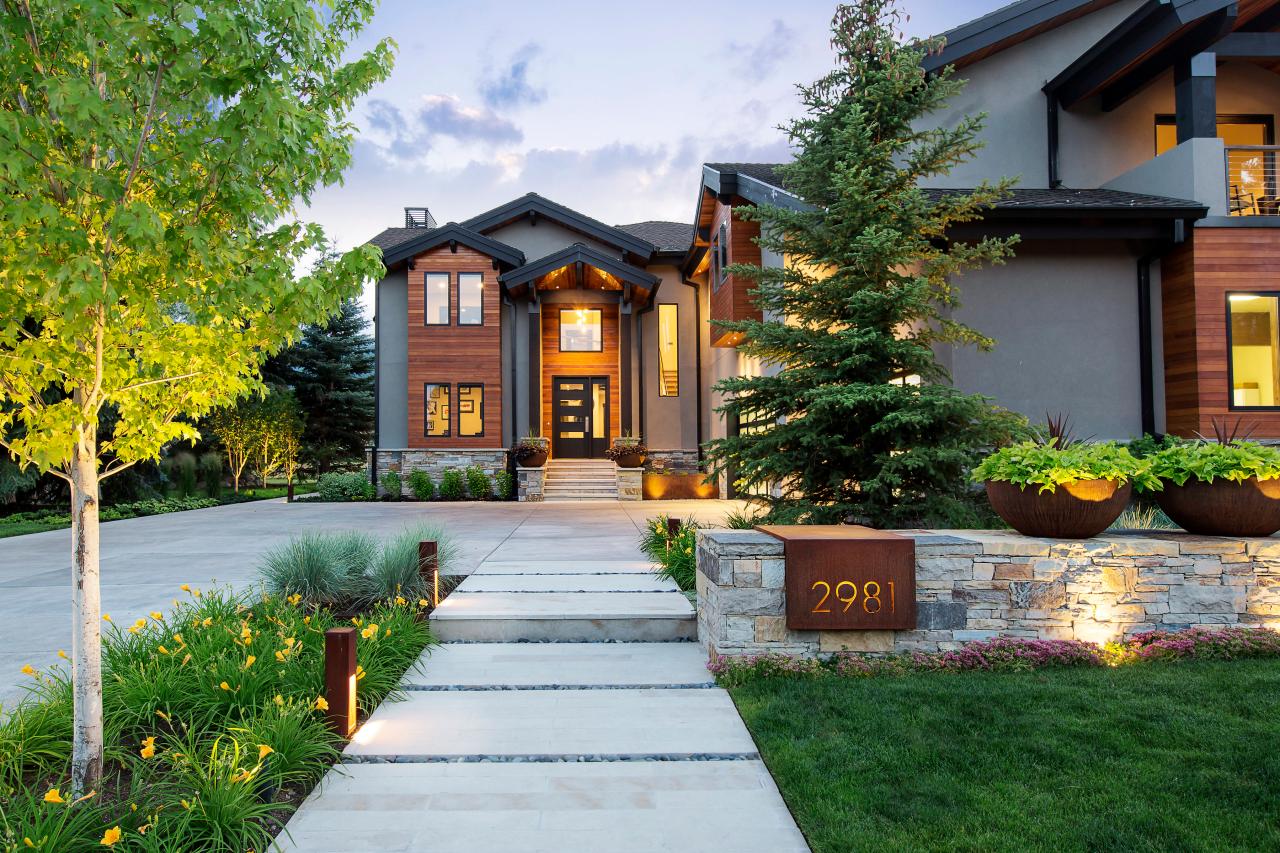
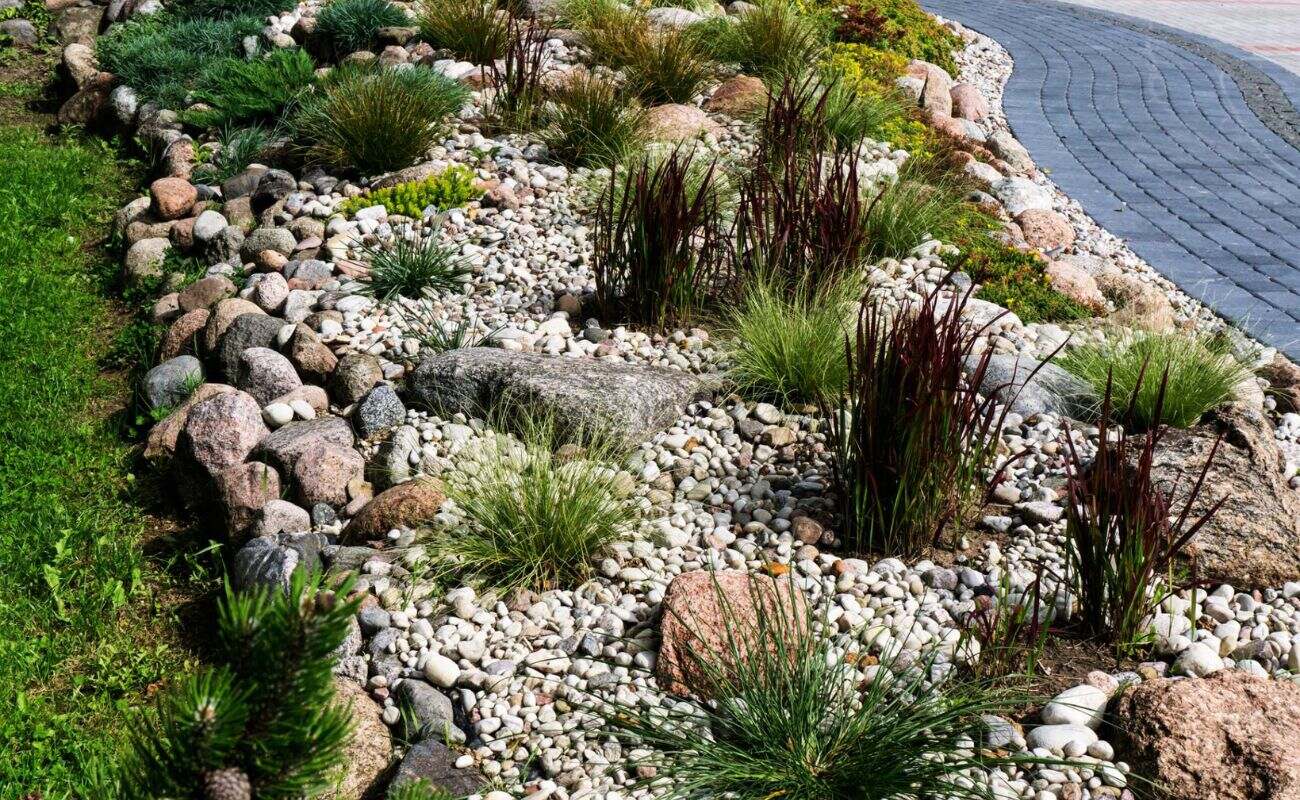
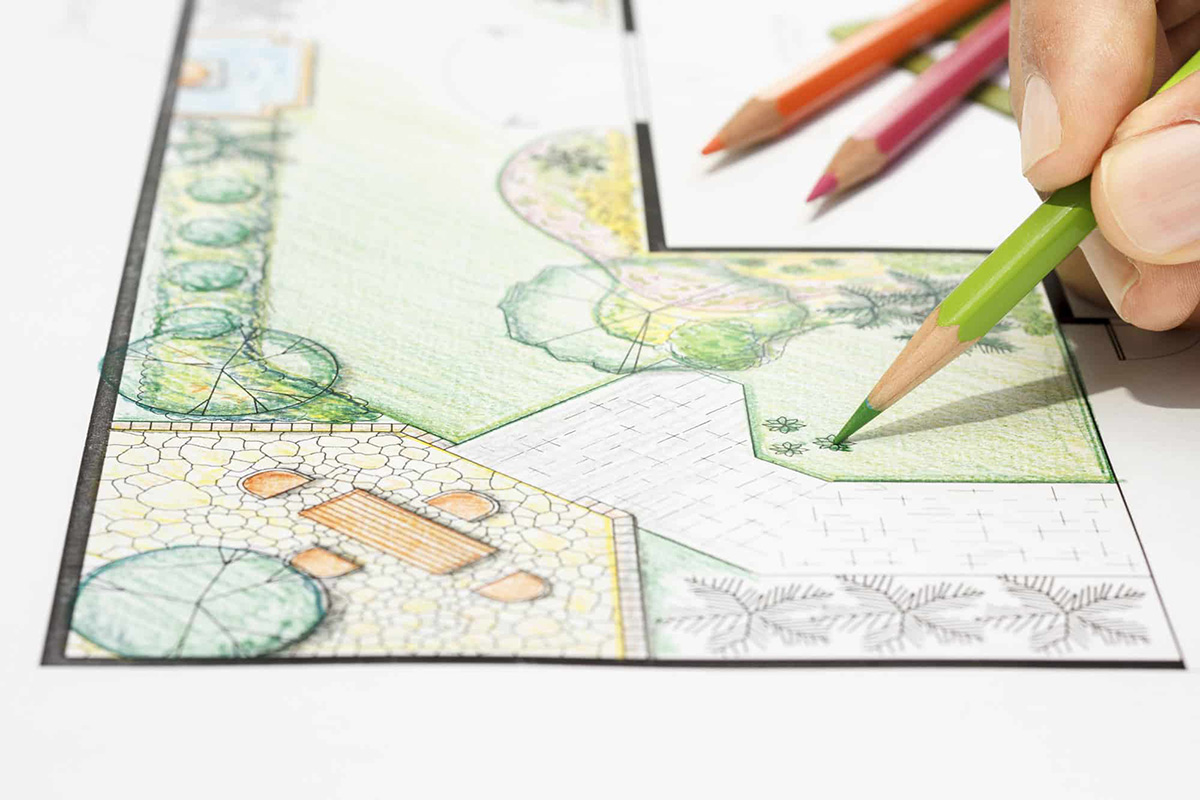
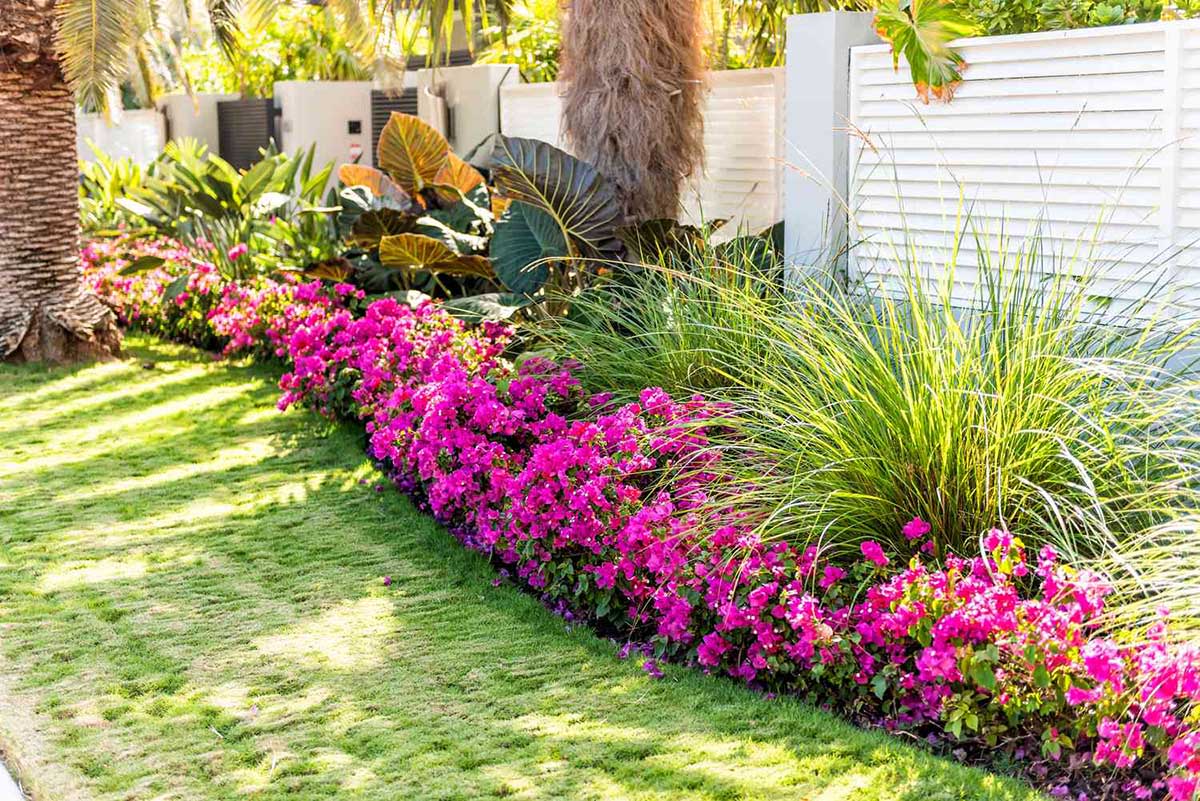
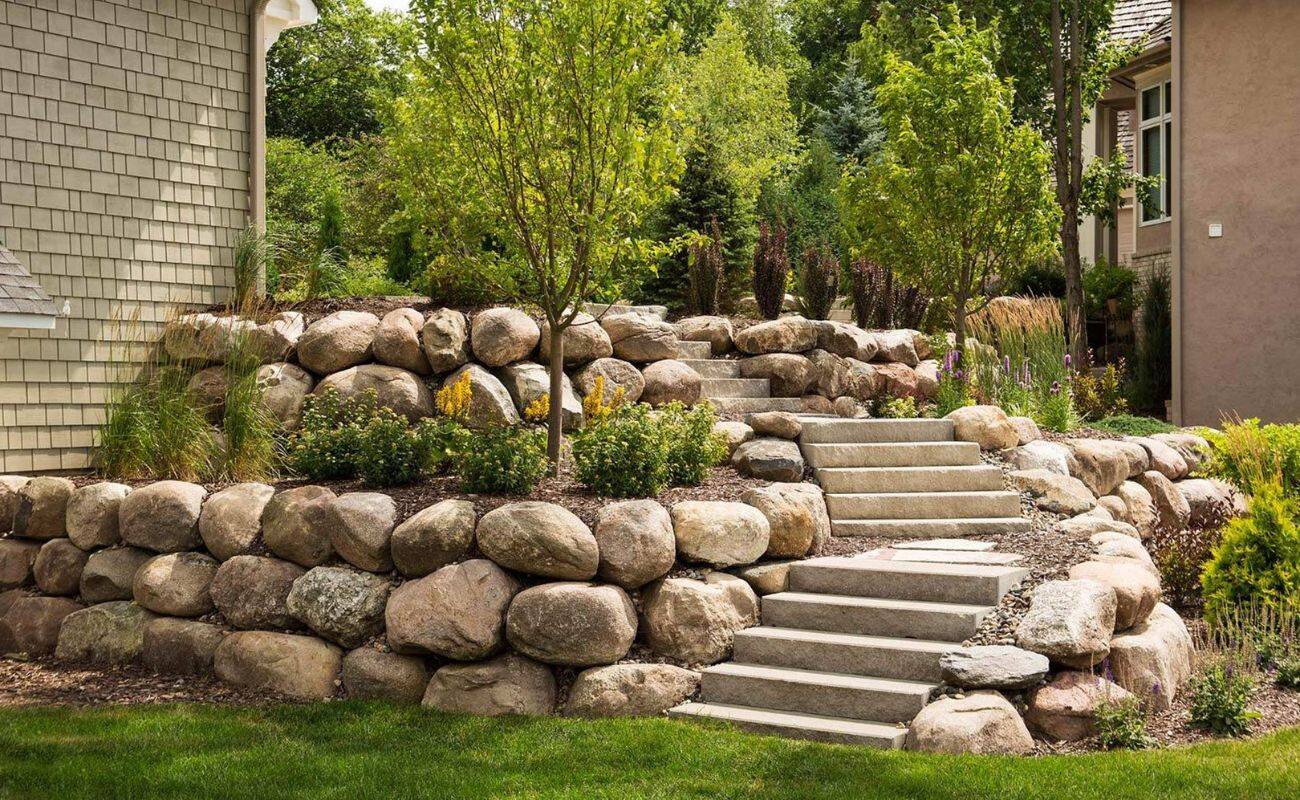
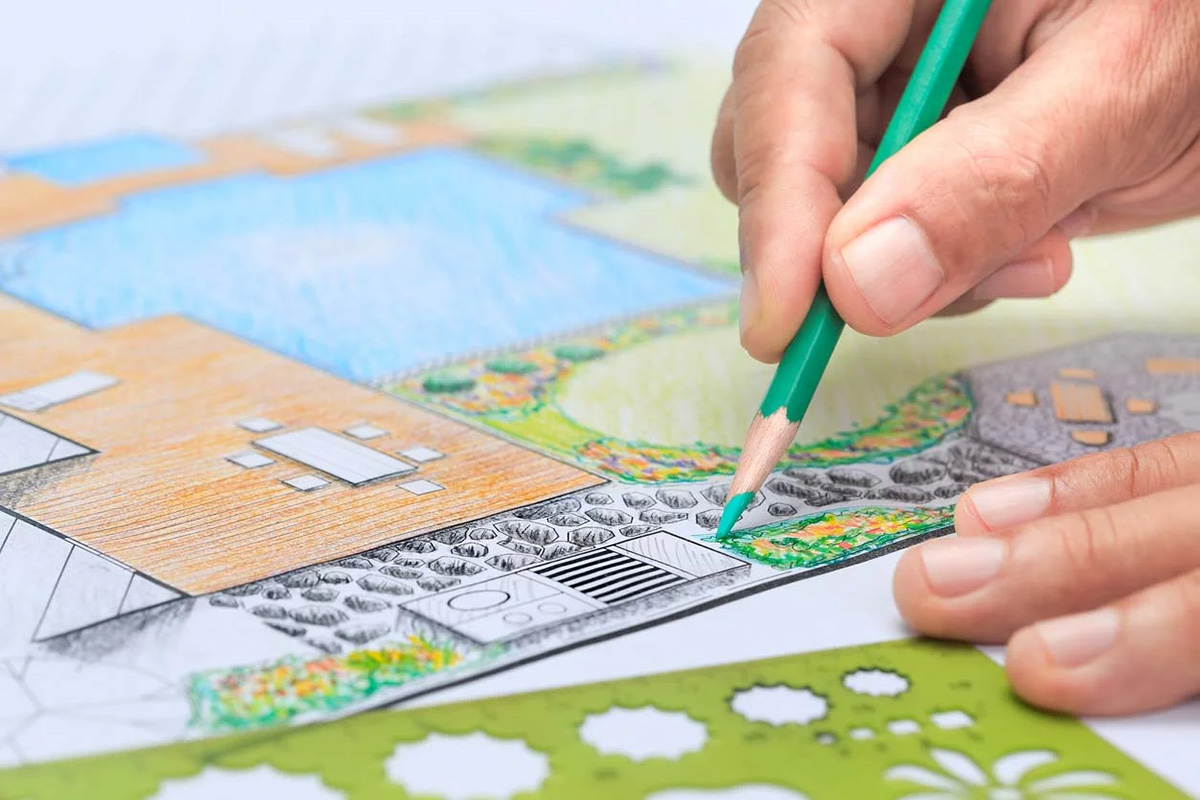
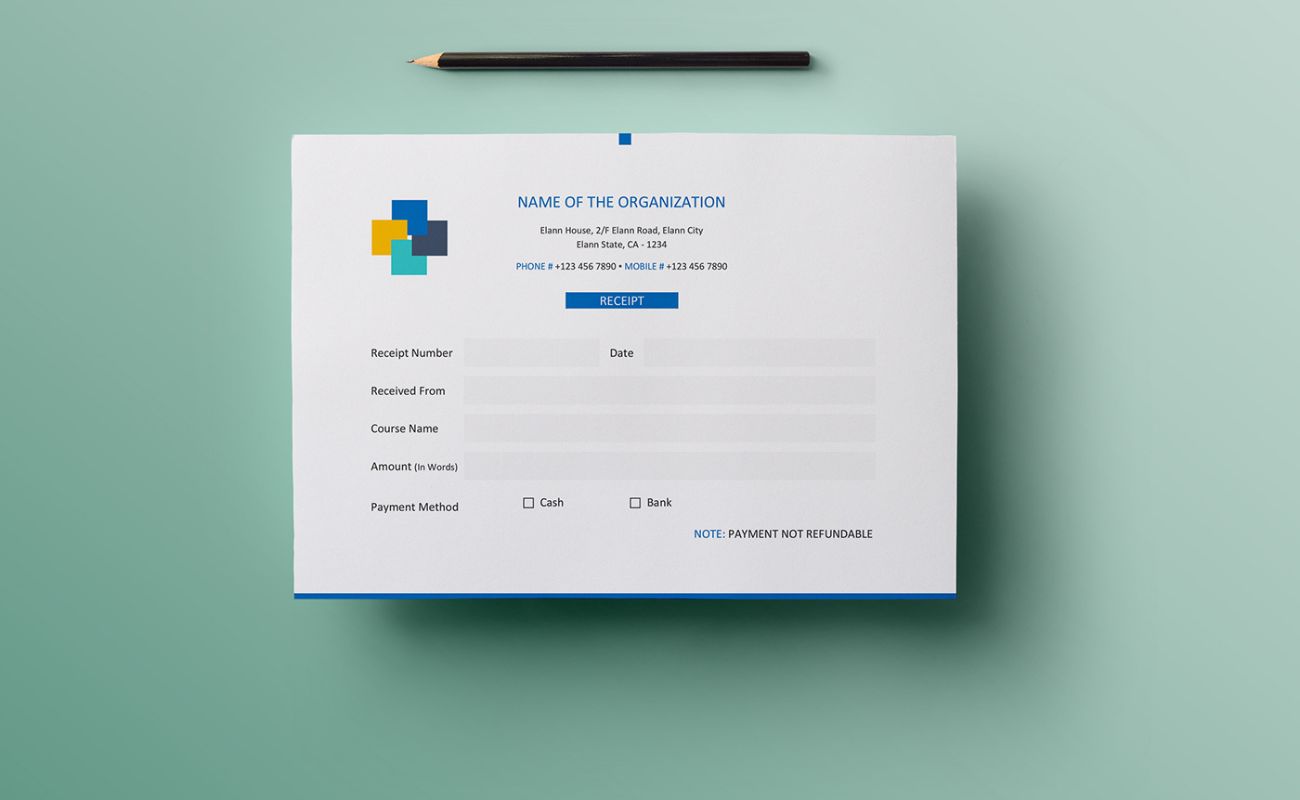

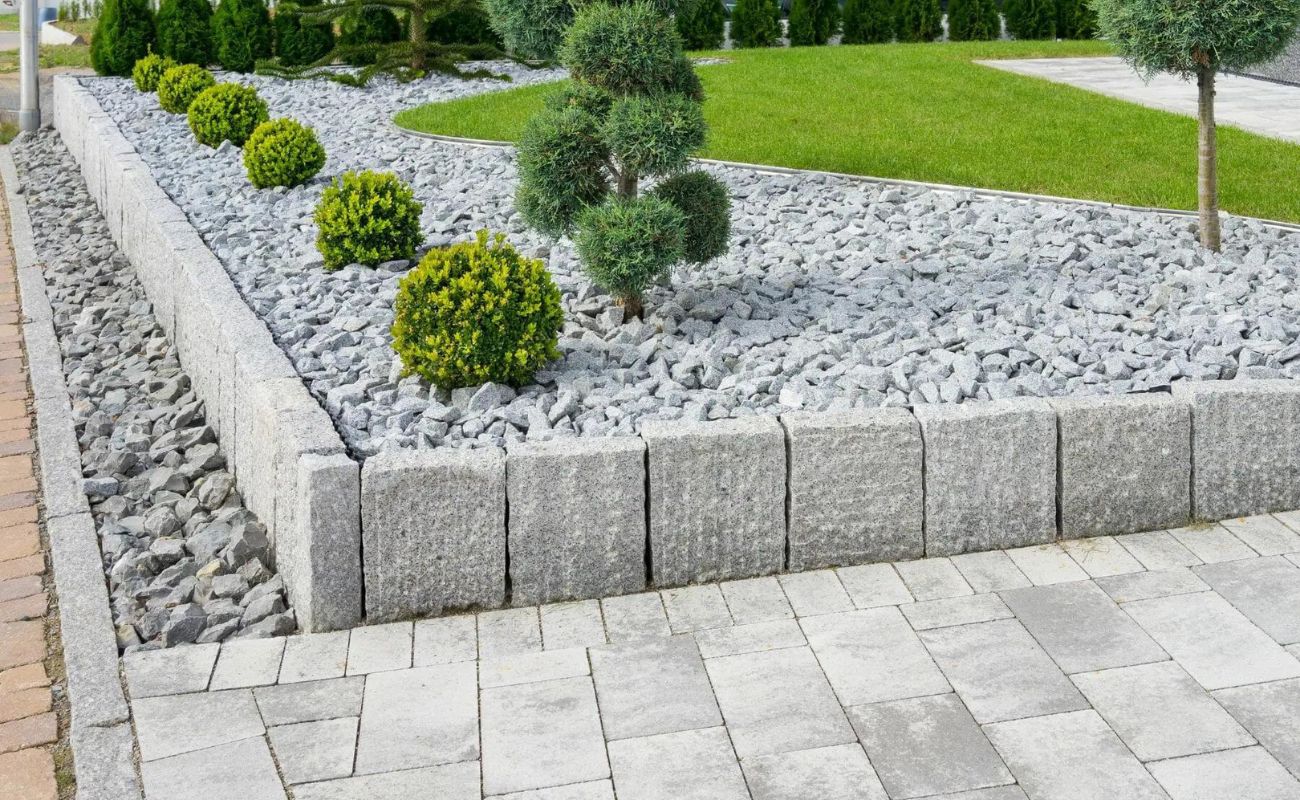
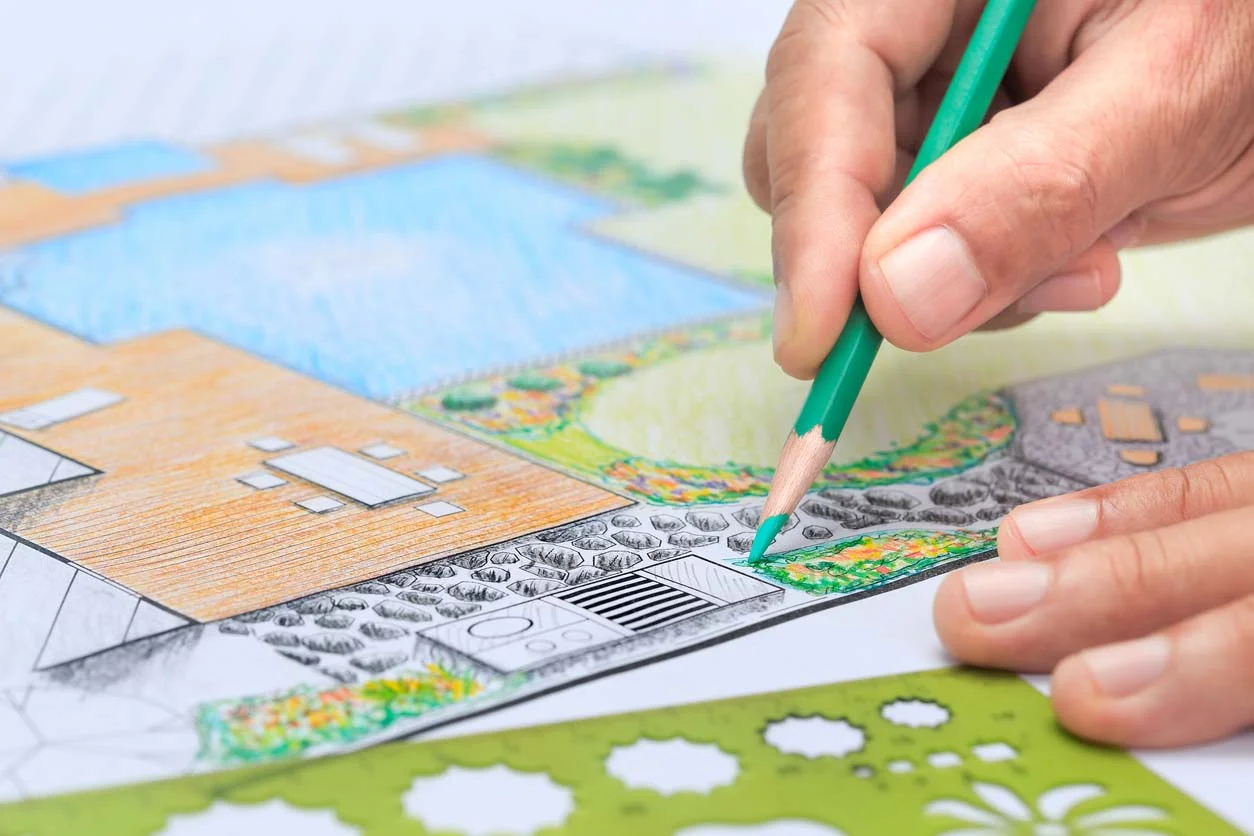




0 thoughts on “How To Do Landscape Design”